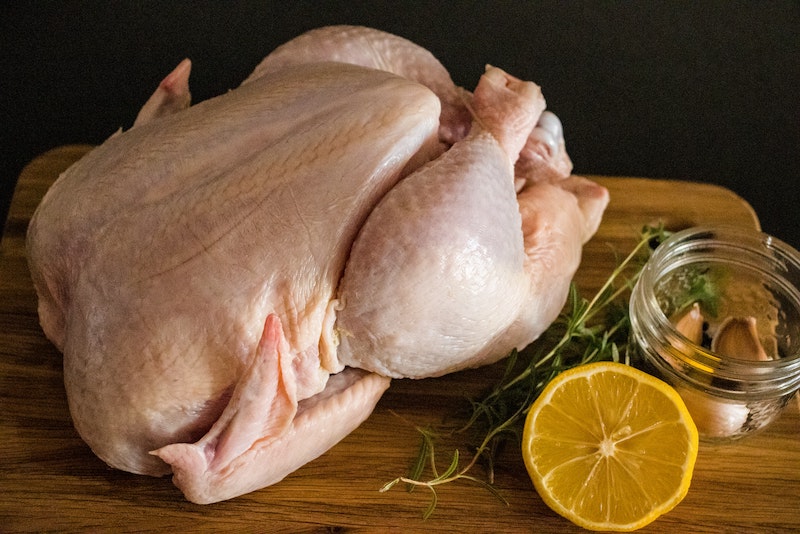Top Recipes for Fried Chicken Skin on a Low-Carb Diet

Keeping your carbs in check is challenging but essential for maintaining a ketogenic diet. Especially if you’re trying to follow a low-carb diet, where most high-carbohydrate foods are banned, keto chicken skin chips have become a favorite snack. Luckily enough, some high-protein foods are also low in carbs.
Chicken skin is one of those foods with almost no carbohydrates but a high protein content. Moreover, it has no fat or cholesterol and many vitamins and minerals, such as niacin, iron, phosphorus, selenium, zinc, and B6.
What are the benefits of chicken skin?
Chicken skin offers several benefits, particularly for those following a keto, low-carb, or carnivore diet. When raw chicken skin is converted into homemade chicken skins, it becomes a keto-friendly and gluten-free snack chip and crisp.
Like pork rinds or pork cracklings, chicken skin chips provide a crunchy texture like potato chips without the added sugar. The skin is high in fat and protein, making it a satisfying treat. You can easily make chicken skins in the oven by purchasing raw chicken from the store and removing the skin.
Seasoning and baking the chicken skin can create a delicious snack chip. However, it's important to note that individuals can only eat a few chicken cracklings, as they can be high in calories.
Getting a lot of protein is one of the most crucial advantages of eating chicken skin. The typical chicken skin can have around 15 grams of protein for every 100 grams. Protein is an essential nutrient for the human body. It helps grow and repair tissues such as muscles, skin, hair, and nails, which is especially beneficial when following a ketogenic diet.
Plus, protein is also necessary for adequately functioning the body’s organs. Chicken skin is also rich in minerals. It contains a good amount of calcium, phosphorus, iron, zinc, and selenium, all essential minerals, especially on a low-carb diet.
All these minerals are essential for the body, especially following a ketogenic diet. Iron is necessary for red blood cells, phosphorus is needed for healthy teeth and bones, zinc is necessary for metabolism, and selenium is required for the immune system—nutrients often found in chicken breast and other keto-friendly foods. Calcium is also essential for strong bones and teeth.
How many carbs are in chicken skin?
One of the most common questions about chicken skin is its carb count. The first thing to mention here is that chicken skin has no carbs.
Chicken skin doesn’t have any fat or cholesterol, either. Even more important is its high protein content, with around 15 grams of protein per 100 grams, making it ideal for a ketogenic diet.
The only thing that might confuse some people is that chicken skin is also called poultry skin in some parts of the world. It can be confusing whether it contains carbs, as poultry skin has some carbs. The carbs in poultry skin come from protein sources and fats used for cooking.
How do I eat chicken skin?
As we have mentioned earlier, chicken skin has no carbs in it. So, how do you eat it? Well, the best way to eat chicken skin is to fry it.
The high temperatures will ensure that the chicken skin contains no carbs, making it perfect for a low-carb diet. So cook it well and heat it to high temperatures to ensure it is crispy.
Another way to eat chicken skin is to make crispy chips or cracklings. They are also easy to make and taste delicious. To make the chips, cut the chicken skin into small squares or other shapes, put them on a baking tray, add olive oil or another oil that won’t turn into trans fats when frying, and then bake them for about 10 minutes.
Is chicken skin keto-friendly?
Yes, chicken skin is keto-friendly. It is one of the best keto foods, especially if you want keto chips. The high protein content and zero carbs in chicken skin make it a delicious keto food that you can eat with almost every meal. The best way to eat chicken skin is to fry it or make crispy chicken skin chips.
Are there any side effects of eating chicken skin?
Since chicken skin has no carbs, you can enjoy it whenever you like, making it a convenient option for a ketogenic diet. But you should consult your doctor first if you have any health conditions. It is essential to consult your doctor if you have high blood pressure, diabetes, or heart problems.
It is also recommended to eat fried foods sparingly. It is because fried foods are high in trans fats and can increase the risk of heart disease, diabetes, and some cancers, which is why many opt for ketogenic diets low in such unhealthy fats.
Summary
Chicken skin is a delicious keto snack that has no carbs at all. To enjoy this fantastic snack, fry it or make some crispy chicken skin chips. Ensure you fry it nicely to avoid trans fats and enjoy the delicious taste of flaky chicken skin.
If you like chicken and are on a keto diet, there is no better snack than chicken skin. It is high in protein, low in carbs, and has no fat. Ensure you fry chicken skin nicely to avoid trans fats and enjoy it as delicious chicken chips instead.
Eating chicken skin can be an enjoyable and tasty experience. So, what are you waiting for? Enjoy eating delicious and crispy chicken skin, such as the 8-pack of crispy chicken flock chips.
Monitoring your food intake is crucial to living a healthy and sustainable lifestyle, especially if you're trying to maintain a low-carb or ketogenic diet. Knowing what is in your food is also crucial, particularly when following a low-carb or ketogenic diet. It can take time to keep up with many different types of food and diets.
FAQs
What is chicken skin?
Chicken skin is the outer layer of the chicken. It is rich in flavor and often crispy when cooked. For health reasons, it is commonly removed before cooking.
Is chicken skin keto-friendly?
Chicken skin is low-carb and keto-friendly, high in fat and protein, and contains minimal carbs.
How do I make crispy chicken skin chips?
To make crispy chicken skin chips, first remove the skin from chicken thighs or breasts, ensuring they are ready for keto chicken skin chips. Season the skin with your preferred seasoning, then bake or fry until crispy.
What is the difference between chicken chips and chicken skin cracklings?
Chicken chips are thin slices of crispy chicken skin, while cracklings are larger, crunchy pieces of rendered chicken skin. Both can be delicious keto snacks.
Can I eat chicken skin on a ketogenic diet?
Yes, you can eat chicken skin on a ketogenic diet. It is a good source of fat and protein without significant carbs.
Are crispy chicken skin chips gluten-free?
Most crispy chicken skin chips made at home with essential ingredients are gluten-free, but always check labels for store-bought options.
How do I make baked chicken skin chips?
To bake chicken skin into chips, lay seasoned skin on a baking sheet and bake in a preheated oven until crispy for a healthier alternative to traditional snacks, resulting in gluten-free, sugar-free keto chips.
